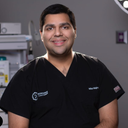Short answer: the results can be maintained. Long answer: Platelet-rich plasma has been utilized for years in wound healing and orthopedic conditions, but more recently it has gained traction in aesthetic medicine, especially with respect to hair loss. Several clinicians have had some success in treating alopecia of various etiologies (lichen planopilaris, alopecia areata, etc), but most of the limited data have been focused on PRP use for male- and female-pattern hair loss.









